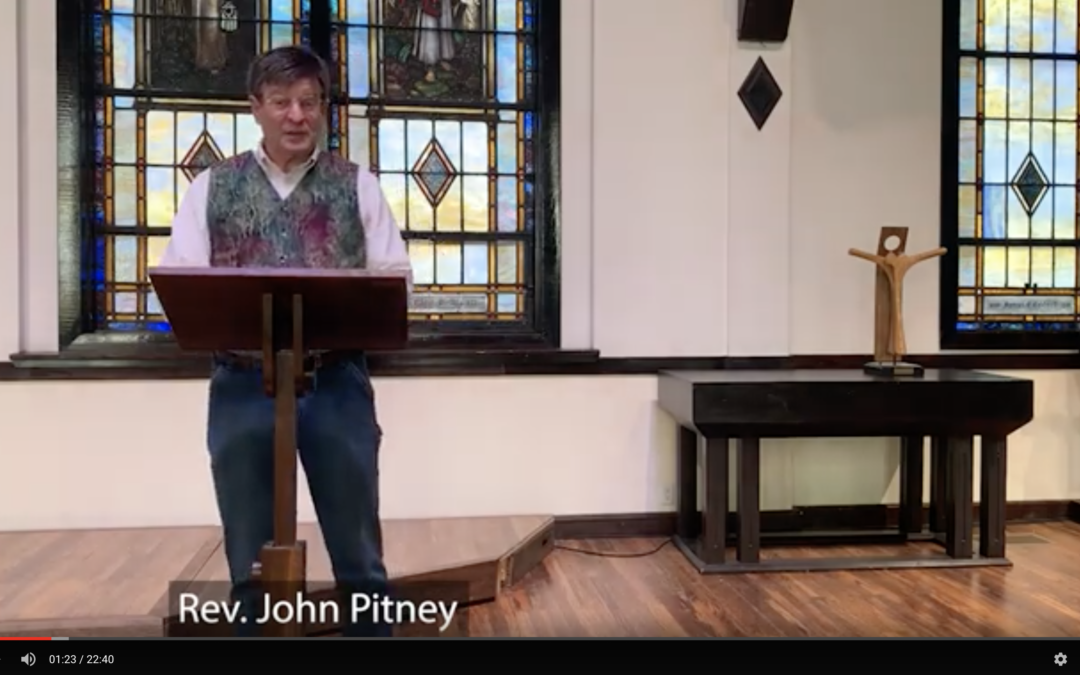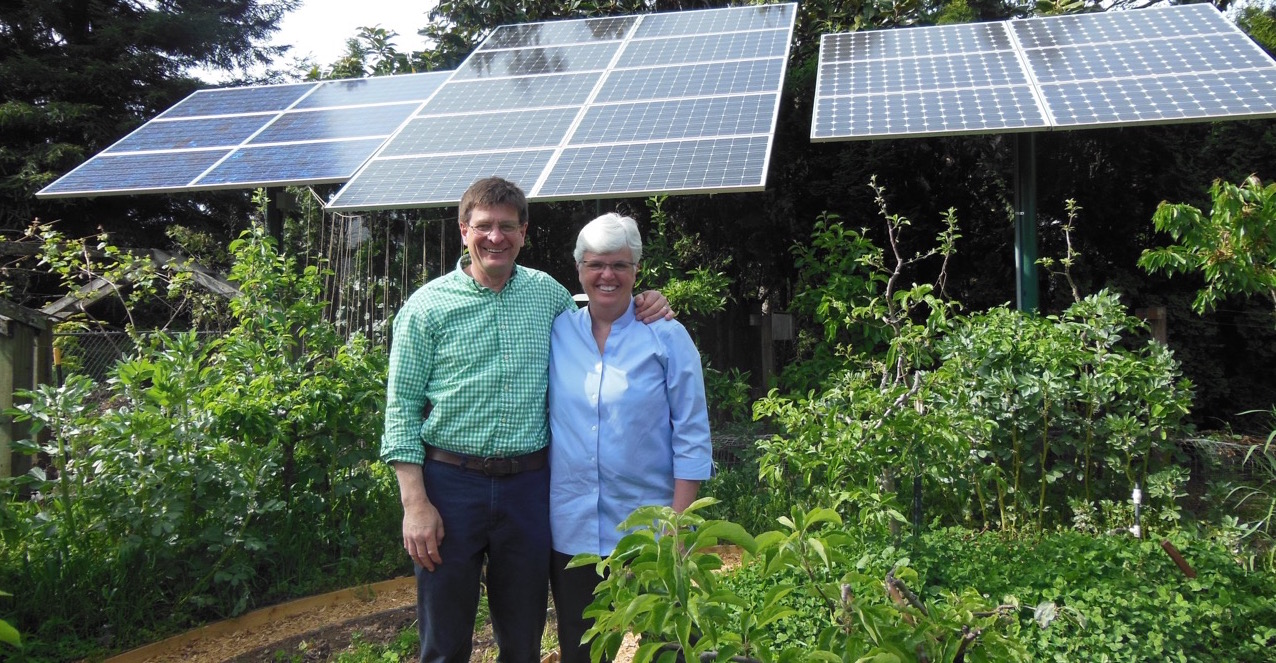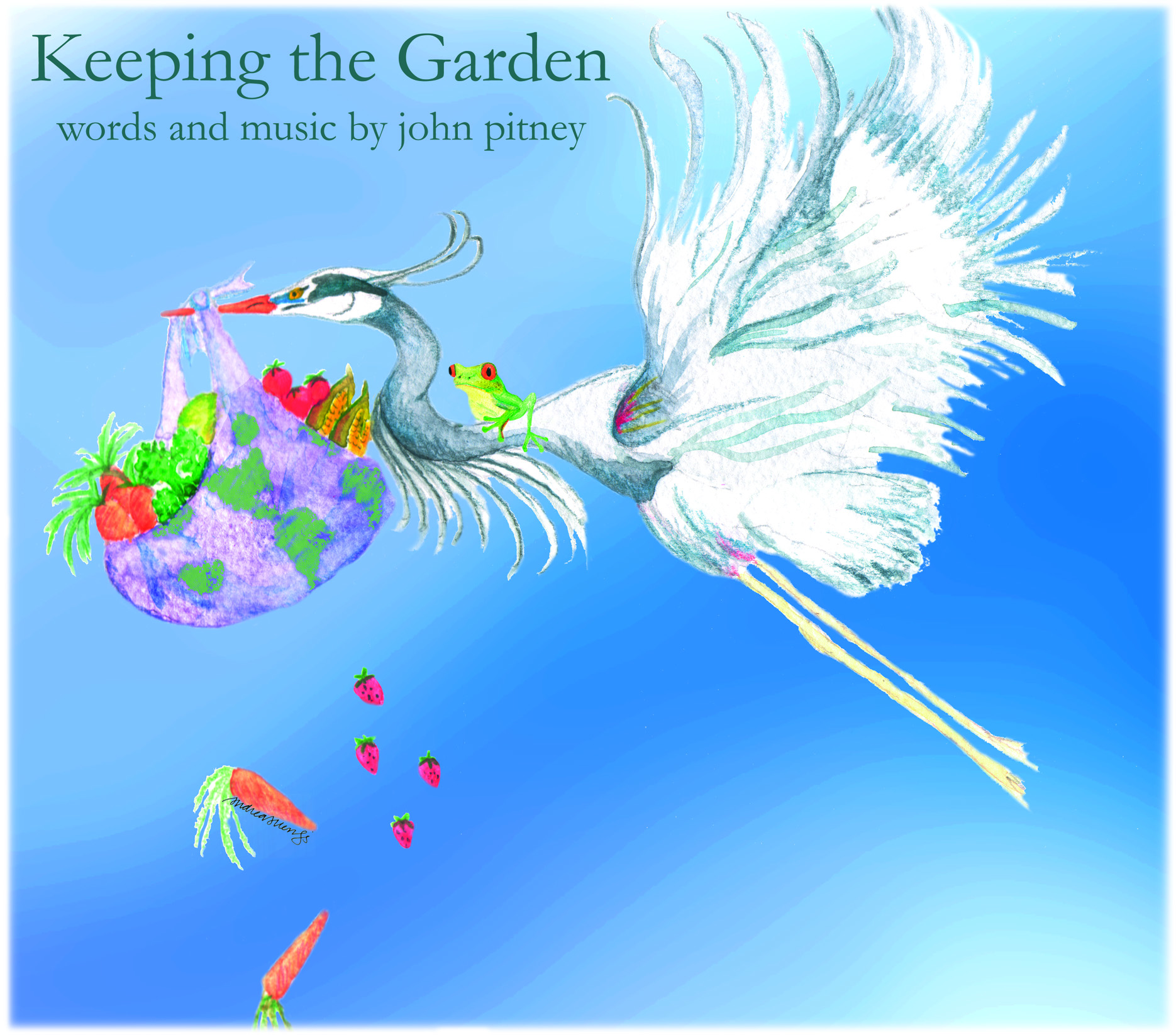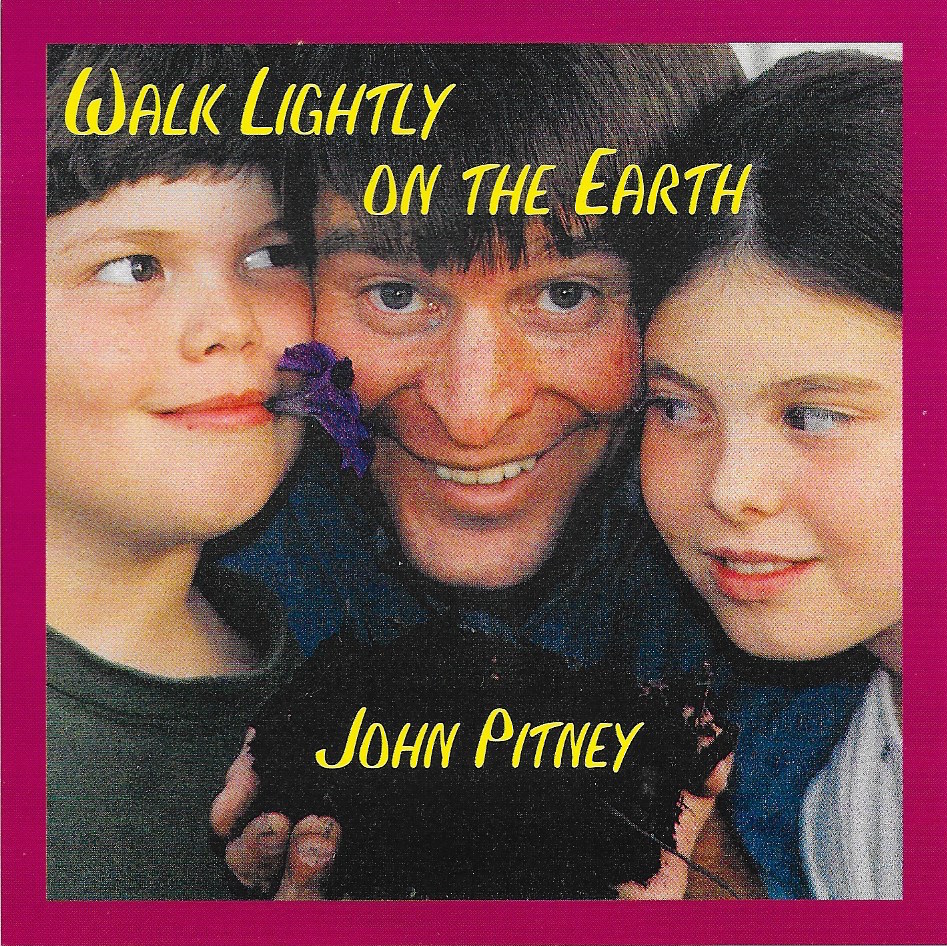I was asked to zoom preach at Bend United Methodist the third Sunday of Lent. Because I didn’t get around to posting the video until now, in the middle of Holy Week, I offer it as a reminder that, if we don’t understand the real Jesus, we don’t have much chance of understanding the significance of his crucifixion and death. And if we don’t get crucifixion and death, then how could we ever make anything out of Easter but an ancient fairytale, completely oblivious to the social, economic and political upheavals of the Jesus time and the violence and exploitation that cried out for kindness and justice then and cries out still.
The story of Jesus entering the Temple in Jerusalem during the violent time of Passover to overturn the tables of the bankers and drive out the exploiters, is one of a very few scriptures repeated in all four Gospels. That means something. It is often listed among the primary reasons Jesus was arrested and executed by the government. The Temple incident really begins the drama of Holy Week that ends with some of the women closest to Jesus fleeing an empty tomb in panic and fear. In our time of incredible horror, especially for people on the margins and endangered species around the world, the hope of resurrection must be more than an ancient tale. And it must be more than a private “me and Jesus” moment with the promise of me and my kind making it to heaven with the Easter Bunny after we die. The poor and disenfranchised among us may indeed dream of an afterlife where they can finally flee the cruel shit show they’ve had to endure in this Realm all their lives, and an old white guy like me should never take that from them.
But, in my reading, it has very little to do with the Promised Land of Scripture, where heaven will be established on earth here and now. If there is a Resurrection, it is a raising of the whole Creation, all of us or none. It is the long-awaited Shalom where wolves dwell with lambs and every family sits beneath their own vine and fig tree with none to terrify them. It is the Beloved Community of justice and daring in real time. It is overturning the tables of the personal, social, economic and political Domination Empire that crucifies daily our precious world or it is a cultish sham and the joke no one gets. Lord have mercy, I hope I’m right.
You can watch a video of the full sermon below. If you’d rather read it, below is the text version of the sermon. The numbered entries denote the photos shown on slides with the sermon. Happy Easter!
Tell Me the Stories of Jesus
A sermon of Lent—March 7, 2021—by John Pitney
The Jewish Passover was approaching and Jesus made the journey up to Jerusalem. In the Temple he discovered cattle and sheep dealers and pigeon sellers and money-changers sitting at their tables. He made a rough whip out of rope and drove the whole lot of them, sheep and cattle as well, out of the Temple. He sent the coins of the money-changers flying and turned their tables upside down. Then he said to the pigeon dealers, “Take those things out of here. Don’t you dare turn my Father’s house into a marketplace!” His disciples remembered the scripture: “The zeal of your house shall eat me up.
John 2:13-22, J.B. Phillips Translation
I don’t think I was raised right. I mean, even before conception I was always in church. But by adolescence the stuff that seemed to mean so much to everyone else missed me somehow. You know, I’d sing Tell Me the Stories of Jesus to please Mrs. Chapman, my Sunday School teacher. If I was anything, I was polite. But I don’t know.
Tell me the stories of Jesus I love to hear,
Things I would ask him to tell me if he were here.
Scenes by the wayside, tales of the sea…
oh let me hear how the children stood ‘round his knee…
I’m sorry, Mrs. Chapman, I tried really hard, but I never really got it, there were always verses missing. Like this one for instance:
See how he cleared out the temple, cracking a whip?
Dumping the tables of loan sharks. They don’t give a rip!
Toppling the mighty, empowering the poor,
Spreading the wealth around. OMG, tell me more!
THAT WOULD’VE GOTTEN MY ATTENTION!
If ever there was a time to re-discover the real Jesus and re-claim the authentic work of the Jesus, People, it’s certainly now. 500,000 dead, many of them needlessly. Spectacle lynching of people of color and tribal genocide still very much part of the American story in 2021. All God’s Creation in climate catastrophe, crying out for us to get a clue. It’s a glorious and treacherous time, right? Because it’s never been worse …but we’ve also never had a chance like this to make heaven on Earth, to become the new humanity and new creation Creator made us to be!
Each year, my own search for Jesus begins in Advent. Advent 2020 kind of stunned me. First off, I wasn’t really prepared for John the Baptizer to arrive—you know, in person. Pretty sure I saw John here in Bend in December. I can’t be certain. There were no locusts and honey stuck in her craw, but she had the attitude. With the virus raging, hospitals overflowing and 300,000 dead, there was a rally in downtown Bend. Un-masked Trumpers waving “Don’t Tread On Me” flags, were protesting masks and lockdown as violations of civil liberty! A first year teacher pulled up in her car at the nearest stop sign. As the crowd chanted, “USA! USA!,” she opened her window, aimed two middle fingers and screamed, “F–you! I teach students! My students’ families are dying!” She was national news. Probably lost her job. They said she had a meltdown, lost her head. Of course, that’s what people have been saying about the Baptist since the beginning. And who knew as simple an act as putting on a mask would fan the flames of insurrection in the Temple of our Democracy?
When the story of the season announced the birth in a manger, I couldn’t get it. Others were enthralled in Silent Night-Holy Night embracing that baby, meek and mild. As if the story was about them, as they imagined swaddling the child as their own. They somehow saw this gentle Messiah saving their own in the commercialized miracle of white America.
1. Nativity in COVID masks
All I could see was the manger scene in masks. All I could hear was Mary’s song, mysteriously erupting from her womb in a scandalous melody:
My soul magnifies the Lord who embraces the disenfranchised.
(Luke 1:46-55)
This child I bear will scatter the proud
put down the mighty from their thrones
exalt those on the margins
fill the hungry with good things
and send the rich empty away.
My dilemma is that I and mine are the proud, enfranchised in our privilege. If we’re not mighty, we have access to the mighty. We are insiders, filled with exponential good things and by anyone’s imagination, quite rich. Our way of life is destined to scatter us from each other and leave our society literally bankrupt. So, hearing Mary’s song, you might understand how the creche this year was not my creche. I find myself on the outside of Nativity looking in. On the inside are the outsiders, a gathering of victims around a victim’s manger, claiming their destiny in stardust, firmly planted under a star.
Entering the season of Lent we’re told it’s a time of self-reflection, which, seems to me dangerous for white Americans when our lives are already all about us. As the season unravels, with the ash of the cross still asmudge on our foreheads we hear the Star Child, the Victim’s Victim, standing in the Temple giving his inaugural speech. Handed the scroll of the Prophet Isaiah, he announces our purpose:
The Spirit of the Lord is upon me,
(Luke 4:18)
because God has anointed me to preach Good News to the poor.
God has sent me to proclaim release to the captives
And recovery of sight to the blind,
To set at liberty those who are oppressed
To proclaim the Acceptable Year of the Lord.
What is ‘Good News to the poor’ anyway?:
Not to be poor anymore, right? To be empowered?
Descending cycles of generational poverty transformed to
Ascending spirals of community sufficiency?
A society without a 1%—everyone with a share in the commonwealth
A seat at the Table for all genders
And races no matter what you worship or who you love?
A government opposing monopoly and codifying equity?
Isn’t good news when you don’t have to have “the talk” with your children about
driving while black, brown or tribal?
Isn’t it not having to live in zip codes of climate chaos, hurricanes
and wildfires because of your race, your income or immigrant status?
Good news to the poor is a Beloved Community where breathing free, a living wage, heath care, safety, asylum and a livable future on a viable Planet aren’t privileges but rights for all humans and all living things!
All this being said, it is hard to over-emphasize the importance of the message Jesus was sending when he traveled to Jerusalem, maybe for the only time in his life, showed up at the Temple and overturned the tables of the bankers. There aren’t a lot of the stories and sayings of Jesus that show up in all 4 Gospels but this one is there in every one! A difference is that Matthew, Mark and Luke place the Temple scene just before the arrest of Jesus and the writer of John’s Gospel puts it at the beginning, as one of the first things Jesus did.
To really understand the message here, I suggest we assume from what we know, that the priority of everything Jesus ever did was bringing this good news to the poor. He was an illiterate peasant among peasants, maybe 5 foot 2 because of chronic malnutrition. He shows up there because he knows what the Temple has become. He would not have been angry at those who sold animals of sacrifice in the courtyard beyond the Temple. People traveled long distances for Passover and couldn’t bring their own animals and they were required to exchange their Roman coins for those without Caesar’s likeness on them, so the bankers.
But the bigger picture was that the Temple had become the possession of an elite and wealthy few, who, in collusion with the violent Roman regime amassed a great Temple Treasury, making loans to peasant landowners at 200% interest or more that they could never repay. And so the Temple elite amassed great fortunes in real estate as land-owners, deep in debt, forfeited their land, lost their families, worked slave labor and lived on the streets. No wonder Jesus had taught them to pray “Forgive us our debts!” And crucifixion was all around. Jesus and his people would’ve have walked past dozens of corpses everyday, not hung on some high cross at the top of a hill but nailed low to the ground along strategic byways where everyone could see them up close, rotting in the sun, bodies ravaged by wild dogs. The message was clear: “There is no good news for your kind. Get over it or you’ll be next!”
So Jesus enters the courtyard of the poor who weren’t allowed inside the holy of holies. He comes at the dangerous time of Passover celebrating liberation from the same kind of brutal exploitation under Pharaoh. He turns the tables of the bankers, sending gold and silver careening from the Temple to the people in the street, demonstrating the good news that all this wealth belongs to the community. In Matthew, Mark and Luke, Jesus adds these words, “You have made my House a den of robbers.” A haven, a hiding place for exploiters. He clearly sends the message that God will only be present here when you do justice.
Finally, channeling the Holy Spirit in the crack of a whip, he completely clears the Temple, saying to the elite, “You can’t hide behind your privilege.” And to those on the margins, “I am one of you. I know we are crucified every day, sacrificed on the altar of someone else’s dream. And when I am crucified for making this scene, I hope you will see you are not alone. I hang on the tree with you. I get you. If there’s any hope of resurrection in this story, it begins right here, in this Temple, in this act, with this message.
Before I go any further, I want you to know what a sacred honor it is to preach. This sermon is not just for a few United Methodists in Bend. I speak to the larger Church but especially congregations of many traditions across Oregon full of people like me, some of whom I have met in my volunteer work with Ecumenical Ministries of Oregon and other inter-church networks, but especially those born, bred and raised in a faith built on the principles of white superiority and a spirituality sprung of the same. You need to be critical of anything I say here, because I can really only speak as the wealthy, white, Christian, American male I am. We have been asked to speak of sacrifice here in our preaching. I can authentically say, by definition, because of my race and status, nothing I have ever done or will ever do is a real sacrifice. Because the larger story is that every day, I and my people are exalted by the daily sacrifices of marginalized people and endangered creatures all over the world who serve at our pleasure.
So as congregations who bear the name of the One who clears the Temple, what are we to do? We might start by asking the Temple question. That is:
When is what we do in worship once a week an escape from the world? And when is it the whip of the Holy Spirit compelling us to bring Good News to those on the margins that their time has come? We need the lyrics of worship songs, the power of prophetic preaching and liturgy not to condone our way of life in the safety of God’s praise, while our neighbors get slammed by laws, policies and customs that prohibit good news. We need Christian education that equips children, youth and adults to see how our white privilege blinds us to our neighbors of color—Sunday School with opportunities to listen to those neighbors and learn how we can change the world together.
2. Quote of Bishop Camara
Former Catholic Bishop of Brazil, Dom Camara once spoke some words with the power to change the way we see our calling and our church: He said,
When I give food to the poor, they call me a saint.
When I ask why the poor have no food, they call me a communist.
We have communities of faith among us and around the world doing compassionate service feeding the poor. But we need many, many more people of this Temple-Clearing Jesus to be out there asking why they are poor and what keeps them poor! We need to be at the hospitals and morgues asking why more than 500,000 people needed to die in our democracy and why black, brown and tribal people die at rates 3-5 times higher than whites from COVID and Climate.
3. George Floyd on fence (2300-c85 jpeg)
We need to be marching in the streets with our brothers and sisters of color carrying signs that say “I Can’t Breathe!” and “Say Their Names!” helping provide a peaceful presence when the anarchists and proud boys show up to turn it violent.
We need to be at the borders asking how babies can be ripped from their mothers arms and put in cages. We need to stand in our places of worship asking “If our LBGTQ brothers and sisters are children of God why can’t they be married in our church?”
4. Burn scene (screenshot 3.29.45 PM)
We must stand with the victims of wildfire and hurricane, with Islanders whose nations are sinking, with people of color in polluted communities asking “How could all 11 U.S. Presidents since JFK have known the dangers of human-caused climate change and still continue to expand funding for fossil fuel development? And why does our government continue to deny that our children have a Constitutional right to a livable Planet?” More and more we hear leaders of tribes and other communities of color asking “Where is the white church?”
These are Jesus questions and I am so grateful for communities of faith in Bend, across Oregon and around our country who are figuring out how to create vital ministries of protest and advocacy in Jesus’ name, writing letters, sending emails to legislators, showing up at City Council, getting on church buses to Salem to ask legislators to legislate with compassion, peacefully demonstrating in Washington D.C. One of the blessings of the past 5 years is more of us taking our worship to the streets and making the world our parish.
5. Bus and people of faith at Capitol 6. People of faith in front of Salem Capitol
See these pictures of our church bus and people of 6 McMinnville congregations in Salem. Every time we went, legislators would say how glad they are to meet with people of faith because we come for the common good. They spend the majority of their time with professional lobbies, trying to buy their allegiance for their own interest.
See how important it is for us to show up?
7. John + Eugene friends in D.C.
In 2017, I joined the Climate March in Washington D.C. with a contingent of thousands of people of faith.
8. Catholics 4 Solar 9. Evangelicals for Climate 10. Methodists for Creation
I was blown away at how visible the churches were: “Catholics for Solar, Evangelicals for Climate, Methodists for Creation.”
11. “I stand with Jesus” sign
And my favorite: “I stand with Jesus, a brown-skinned radical, who condemned greed and taught unconditional love. Someone has said, “Justice is what love looks like in public.” What I know is we need to be out there. It’s the only thing that makes what we do in here believable.
12. Church sign with rainbow colors
Some churches are Reconciling Congregations with rainbows on their signs. Some are Sanctuary Congregations.
13. 1st United Methodist Church of Eugene + solar array
Many are signing the Paris Pledge, planning how to make their buildings and their people’s homes emission free. They have the signage. Everyone knows where they stand because it’s on their websites and facebook pages. If we don’t come out in the open, how is the world to know we aren’t just another Den of Robbers worshipping the sacrifice of the poor ones who keep us rich, hiding behind a white, flaming cross?
14. Crowd at fence at Sheridan Federal prison
A couple summers ago, with people of many faiths from across Oregon and Washington we worshipped weekly outside the fence at the federal prison in Sheridan. Over 100 undocumented immigrants were detained illegally, there and in the county jail in The Dalles. We wanted to be in solidarity with them. We sang to them across the barbed wire, we wrote letters to judges, wardens and senators. We marched from Sheridan to The Dalles, but after a few months nothing had changed.
15. Sitting in circle in driveway of Portland ICE headquarters
So, under the leadership of the Interfaith Movement for Immigrant Justice worship was planned in the driveway of the headquarters of ICE in Portland. I volunteered to be one of 20 clergy in the center of the circle to risk arrest if it came to that. We prayed, sang and read the Stories of Jesus.
16. Arrest of John Pitney
We were arrested for causing a disturbance, zip tied and detained for a few hours. A few years ago I would never have considered this kind of witness. Mrs Chapman raised me to be nice. But even though I know in my heart that “Yes Jesus loves me,” I have learned Jesus wasn’t nice. And I, as a white, American, Christian male have very little to lose when there could be much to gain. I knew that zip-tied was where I was supposed to be, but I didn’t fully grasp the reality until we received the good news that our exploited neighbors inside the prison walls heard about our action and, at least for a moment had new hope. In fact, one of the men had read about it in the newspaper and every night, from then until his release, he slept with the news of our action crumpled in his hand.
How important was this action? I think it would take a long time to ever know. But maybe that day, a few of them could see that, even in our privilege, we know that they are crucified every day for our sins and, at some level, though we don’t hang on the tree with them, we get who they are.









Recent Comments